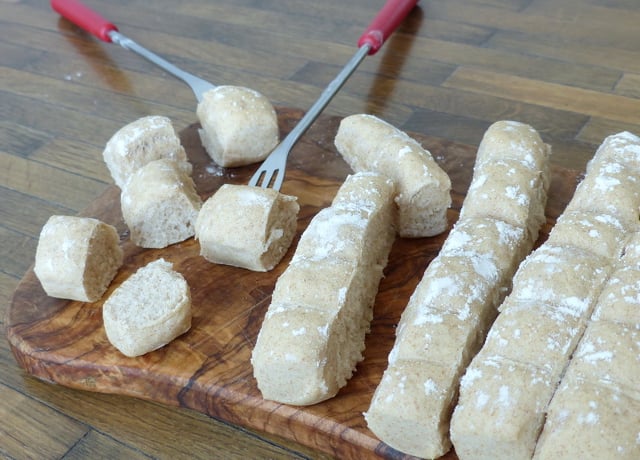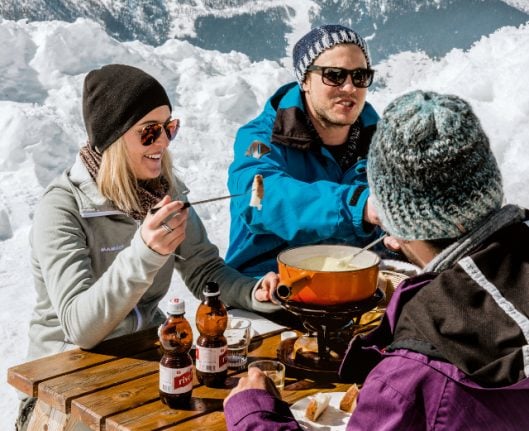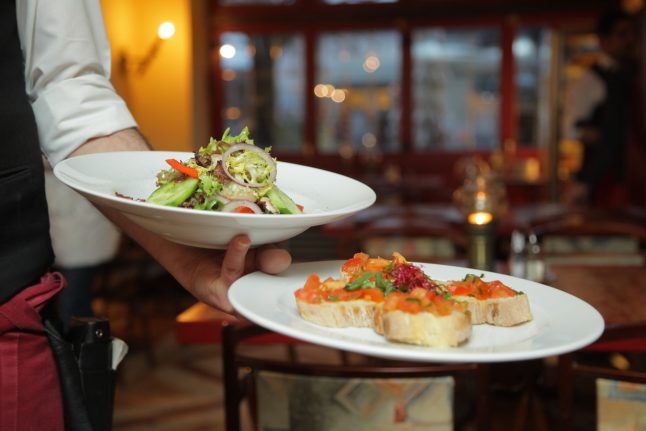Besides chocolate, there's probably nothing foreigners associate more with Switzerland than cheese. As we move towards the colder part of the year, the Fondueziit (fondue time) has begun. While fondue will have been popular across much of the country since October, during Christmas is when most Swiss will get their (cheesy) juices flowing.
Fran from Swiss food blog Little Zurich Kitchen guides us through the dos and don'ts of eating cheese fondue in Switzerland.
Always declare a fondue party invitation as such
First up, an important fondue etiquette to spare you a possibly embarrassing dinner party moment. As popular as cheese fondue is in Switzerland, not every Swiss actually likes cheese, or worse, can stand the smell of it. So, as an unwritten rule, fondue or raclette invitations should always be declared as such in advance, so the invitee can politely decline or the host can find an alternative menu.
Get to grips with the essentials
Once October is here, cheese fondue pots can be bought in most supermarkets and household stores. Fondue pots are called Caquelon, both in French and Swiss German. Ideally you should buy one made from stoneware, ceramic, cast iron or china. You'll also need the long fondue forks and the burner which is called Rechaud. Often the set of pot, burner and forks are sold as one item.
As for the cheese, different cheeses or cheese mixtures are being used, depending on where you are in Switzerland. The most popular one across the country is called Moitié-Moitié (French for half-half), a fondue mixture consisting of 50% Gruyère and 50% Fribourg Vacherin, two raw cow milk cheeses from western Switzerland. You can find this mixture in any supermarket or cheese shop. For a main meal for four people you need around 800g of cheese.
To give the fondue its special taste, several other ingredients are used. An important first step is to rub the fondue pot with a peeled, cut garlic clove. The garlic doesn't go into the fondue as the rubbing alone provides enough garlic taste. Most people add white wine (you'll need about 3dl for 800g of cheese, preferably a dry white wine) and 1 tbsp of Kirsch schnapps but you can also substitute the alcohol with water or apple juice for an alcohol-free version. Whatever liquid you're using, you'll need to mix it with one tablespoon of cornstarch. And a little black pepper and nutmeg to finish.
Once your Caquelon is rubbed with garlic, place it onto your kitchen stove and add the grated cheese. Gently and slowly heat up the cheese while stirring constantly. Once the cheese is melted add all other ingredients and stir again. Then you're ready to light your burner and transfer the pot and start eating.
This is a basic fondue recipe and the one my family has been using for generations. Of course there are many variations and more exotic additional ingredients ranging from beer, bacon, spices such as paprika, chilli or curry to yellow boletuses and morels or tomatoes – the list is endless really.
Choose your bite-sized dipping foods

Make your own fondue bread. Photo: Little Zurich Kitchen
Traditionally, bread cubes are used for dipping into the fondue. My favourite is cutting up a St. Gallerbrot or a dunkler Pfünder, both brown breads. You could also use a heller Pfünder or another white bread if you prefer. Or, you can also make your own fondue bread, you can find my recipe here. Alternatives to bread are cubed steamed potatoes, steamed vegetables or fruit such as pear, apple or pineapple.
As for the drinks, traditionally many Swiss drink white wine with their fondue or a glass of Kirsch schnapps after the meal as a help to digest the cheese. This is actually a myth and the opposite is true: the alcohol slows down the digestion of the cheese. If you need help with digestion, then try black tea, otherwise just drink whatever makes you happy, even if it's a glass of white wine.
Know your fondue etiquette
Eating cheese fondue can be a serious matter in Switzerland. In many families or at dinner parties there are penalties in place for losing your bread in the fondue pot, such as singing a song or buying the others a bottle of wine.
Another battlefield is the question of who will get to eat the Grossmutter (grandmother), also known as Nonne (nun), which is the cheesy crust at the bottom of the fondue pot. Some hate it and some love it – I certainly belong to the latter and am always keen to get a share of it.
Fondue is not an easily digestible meal, so it's always best to serve only a light appetizer and a light, fruity dessert.
And lastly, if cheese fondue isn't your thing, read my instructions for the Swiss' best loved meat fondue called fondue Chinoise.
For more recipes and articles on Swiss food, visit Little Zurich Kitchen.



 Please whitelist us to continue reading.
Please whitelist us to continue reading.
Member comments